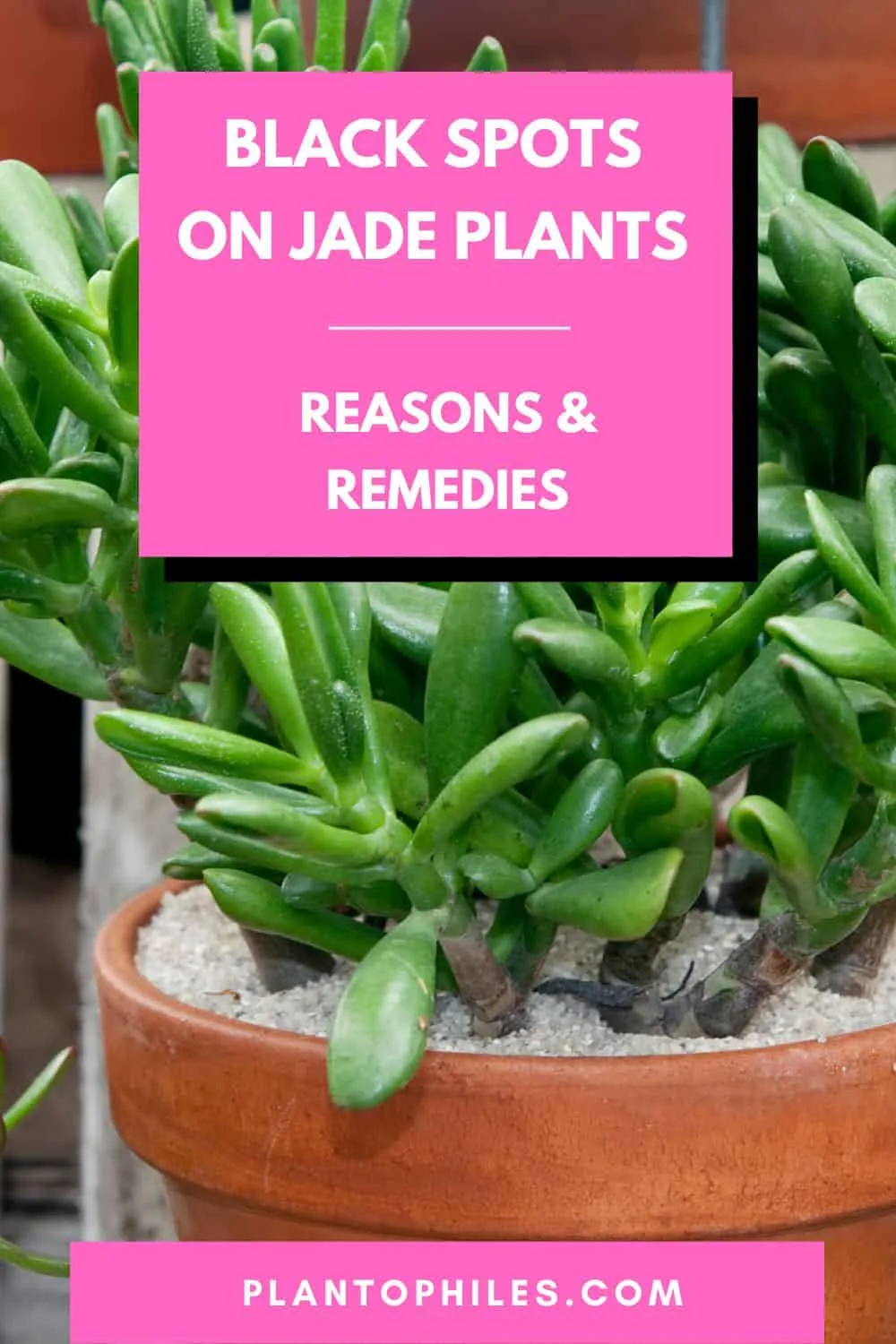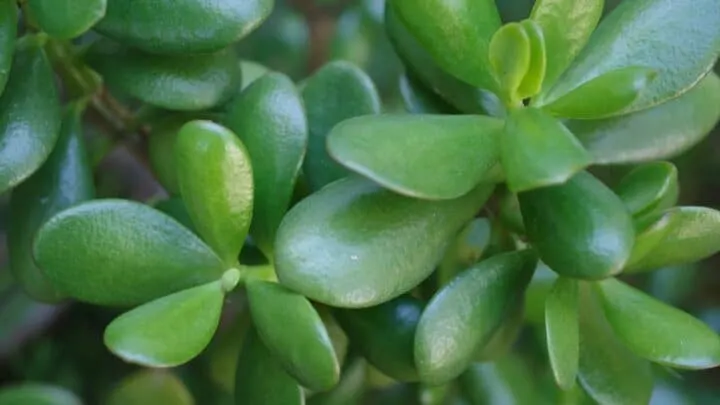Jade plant, or Crassula Ovata, is a succulent variety hailing from the South African area, and it is one of the most popular houseplants gardeners grow.
Both succulent green leaves and tiny pink or white flowers add to the beauty of this elegant houseplant.
This plant symbolizes good luck, but if yours develops black spots (dark spots) on the leaves, something is not right.
This article discusses the causes and remedies for black spots on Jade plants, so continue reading for a better understanding.
Let’s dive right into it.
Table of Contents
Black Spots on Jade Plants
Dark spots on Jade plants commonly indicate stress factors like improper watering, poor drainage, or pest issues. Other causes include viral infections like black ring and fungal diseases due to high humidity, overwatering, or contaminated tools.
Causes Behind Black Spots on Jade Plants
Black Spots on Jade plants should be addressed as soon as possible because your plant might die after a decline in plant health.
1. Watering and Drainage Issues
This is the most common cause behind those dark black spots on the leaves of Jade plants.
This succulent variety thrives in dry, sandy soils. So, if your potting soil retains a lot of moisture, the Jade plant will not grow well.
Always use a well-draining soil mixture that contains grit.
The type of container will also impact your plant’s health. I would highly suggest using an unglazed clay or terracotta pot that will allow evaporation of moisture through the pot surface.
Your container should also have drainage holes to get rid of excess water.
Overwatering or excess water in the soil can cause edema.
In this condition, the roots of your Jade plant absorb water faster than the rate at which the water is used by the plant. As a result, the leaves will develop black or brown surface lesions.
These lesions resemble blisters and usually appear on old leaves in the lower region.
The immediate solution is to repot your plant in a fresh, sandy potting mixture and a well-draining container.
Control and monitor the watering schedule of your plant to help it recover and avoid this issue in the future.
2. Bugs and Insects
Do not ignore the symptoms of pest infestation in winter. Indoor Jade plants are susceptible to mealybugs, spider mites, aphids, and whitefly infection even in winter.
These sucking pests can feed on the nutrients of the Jade plant and impact the appearance of your plant.
If the infection is confirmed, you can either handpick the bugs or use the help of horticulture or neem oil.
Make sure you wipe each leaf using cotton dipped in the soap or oil you have chosen for treatment.
Most pests will hide and feed on the leaves’ undersides. Make sure you carefully inspect and disinfect this area.
3. Lack of Winter Care
Jade plants enter dormancy in cold winter months and stop growing. However, even if they’re not actively growing, you should continue caring for them.
If your Jade plant has developed black spots in winter, it’s most probably due to extra water and humidity.
It’s vital that you reduce both the frequency and amount of watering during the winter to avoid overwatering.
High humidity should also be avoided because it can result in fungal diseases that cause black spots on the leaves.
Increase the ventilation around your Jade plant to lower the humidity.
If several plants are grouped together, make sure you increase the space between them. You can apply an antifungal spray to get rid of bacterial growth.
Go back to watering your Jade plant if the top 3 inches of its soil is sry. You can discard any leaves that are heavily damaged by fungus. Avoid taking cuttings from infected parts.

4. Fungi and Bacteria
Fungal diseases like anthracnose can also cause dark spots on the Jade plant. But this is a rare case because the succulent nature of the leaves protects them from fungal infection.
Most fungal infections occur when the humidity is too high. Using infected tools for pruning, propagation or trimming can also result in a fungal infection.
You can avoid fungal infections on Jade plants by regulating the humidity according to the plant’s requirements.
Clean your gardening tools before and after using them on any plant using alcohol.
5. Virus
Apart from pests, viruses can also cause dark spots on the beautiful leaves of the Jade plant. The most prominent virus for this species is the black ring virus.
Once infected, the undersides of the leaves will start developing black spots. The virus might not kill your Jade plant, but it’s transferable, so avoid taking cuttings from an infected plant.
Treat the infected plant using horticulture oil or soaps. Since most viruses spread via pests, make sure you take the necessary precautions to prevent pest infestations.
The easiest method is to regularly spray the Jade plant with neem oil.
6. Injury
Often, the black spots on the Jade plants are caused by injury or mishandling. Pets or children in your house might have damaged the leaves while playing around the plant.
If this is the case, the plant will naturally recover from the damage, and you do not have to do anything special to help it deal with this. But you can consider relocating to protect it from pets and children.
Make sure you do not injure the plant while relocating.
Frequently Asked Questions about Dark Spots on Jade Plant Leaves
Can too much sunlight cause dark spots on Jade plants?
Although the Jade plant is a sun-loving plant, exposing it to too much direct sunlight can cause sunburns. The leaves will be dry with brown patches or spots. If this happens, you should remove the scorched foliage and relocate your plant to a new location.
How can you avoid dark spots on the Jade plant due to overwatering?
Water your Jade plant less in winter. In summer, you only water when the soil’s completely dry. Avoid planting the Jade plant in clayey soils. You should also increase the drainage in the soil using a porous container.

Daniel has been a plant enthusiast for over 20 years. He owns hundreds of houseplants and prepares for the chili growing seasons yearly with great anticipation. His favorite plants are plant species in the Araceae family, such as Monstera, Philodendron, and Anthurium. He also loves gardening and is growing hot peppers, tomatoes, and many more vegetables.


